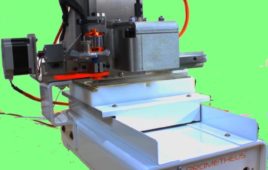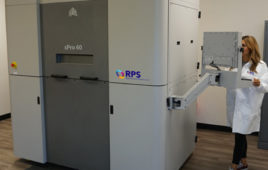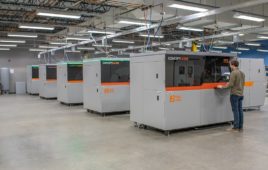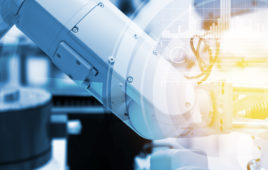Researchers involved in the i-Bearing project have successfully developed indicators for engine starter bearings that help predict when these small, but fundamental, pieces of aircraft engines will become less effective.
Small parts make the big difference
The aviation industry has made a commitment to revolutionize energy systems in aircraft. All novel on-board functions that are being offered in more electric aircraft need to share and distribute more electrical power as well as be more efficient in converting mechanical energy to electricity.
“The demand for extra electrical power in aircraft engines would usually imply bigger, heavier systems. However, we want to pursuit a different approach: making the generators rotate faster,” notes Abel Mendes, chief technology officer of Active Space Technologies in Portugal. This concept is, however, not without its issues: faster rotation implies quicker wearing and degradation of the system. Real-time monitoring with a solution such as iBearing is therefore invaluable.
iBearing’s objective is to improve power efficiency but not at the expense of the environment. To this end, the project placed focus on improving performance of engine starter bearings. These components are fundamental to the operation of engines. According to aerospace engineering specialists, it is hard to predict when they are likely to fail because of their small size and inaccessibility once placed in the engine.
Condition monitoring on the fly
Traditionally, aircraft engines are monitored by ground-based station units. “Analyzing data collected from sensors situated inside the engine during flight enables operators to get better understanding of performance and predict mechanical wear and failure of engine parts,” explains Mendes.
Sensors that are able to measure temperature, pressure, vibration as well as acceleration and noise from the heart of the aircraft engine enable better understanding about the bearings’ lifetime. “Acoustic emission measurements are complementary to vibration sensors as they can draw up information about the bearing degradation at an earlier stage when microcracking initiates,” notes Mendes.
In the early stages of the project, researchers focused on assessing fly-by-wire enabling technologies and smart sensors. The subsequent design and assembly of a sleeve comprising both bearings and sensors that was tested in a dedicated test rig allowed researchers to derive meaningful data analysis and diagnostic algorithms.
“Use of novel data fusion techniques enabled us to ultimately combine 20 condition indicators into a single algorithm that is able to perform fault diagnosis – classify faults and estimate severity by the magnitude – by comparing new data against the established markers of faulty conditions,” adds Mendes. As he further explains, experimental conditions are difficult to replicate in laboratories and test rigs as temperature and vibrations are high, rotation speed is high, and oil mist hampers utilisation of several types of sensors, but the team managed to address this challenging situation.
Bearing high temperatures and speeds
Small size, standalone operation and tolerance to harsh environment were essential to the design of a condition monitoring system able to measure the safe lifetime of the bearing and predict failure at least 100 hours in advance.
With these features in mind, the team succeeded in developing a prototype device for in situ monitoring of bearings able to endure the whole spectrum of rotational speed values throughout the different phases of flight – typically from 10 000 to 30 000 revolutions per minute. The prototype performance was tested in temperatures ranging between 150 and 200 ºC and demonstrated encouraging results.
Further miniaturization of the iBearing solution and better thermal management will be needed to increase the capability of the product to adhere to standards. The final product will be a miniaturized piece of equipment that will be easy to install in any bearing, requiring only minimal adaptations to the shape of new bearings. This autonomous condition monitoring system will require no operator assistance.
Filed Under: Rapid prototyping




